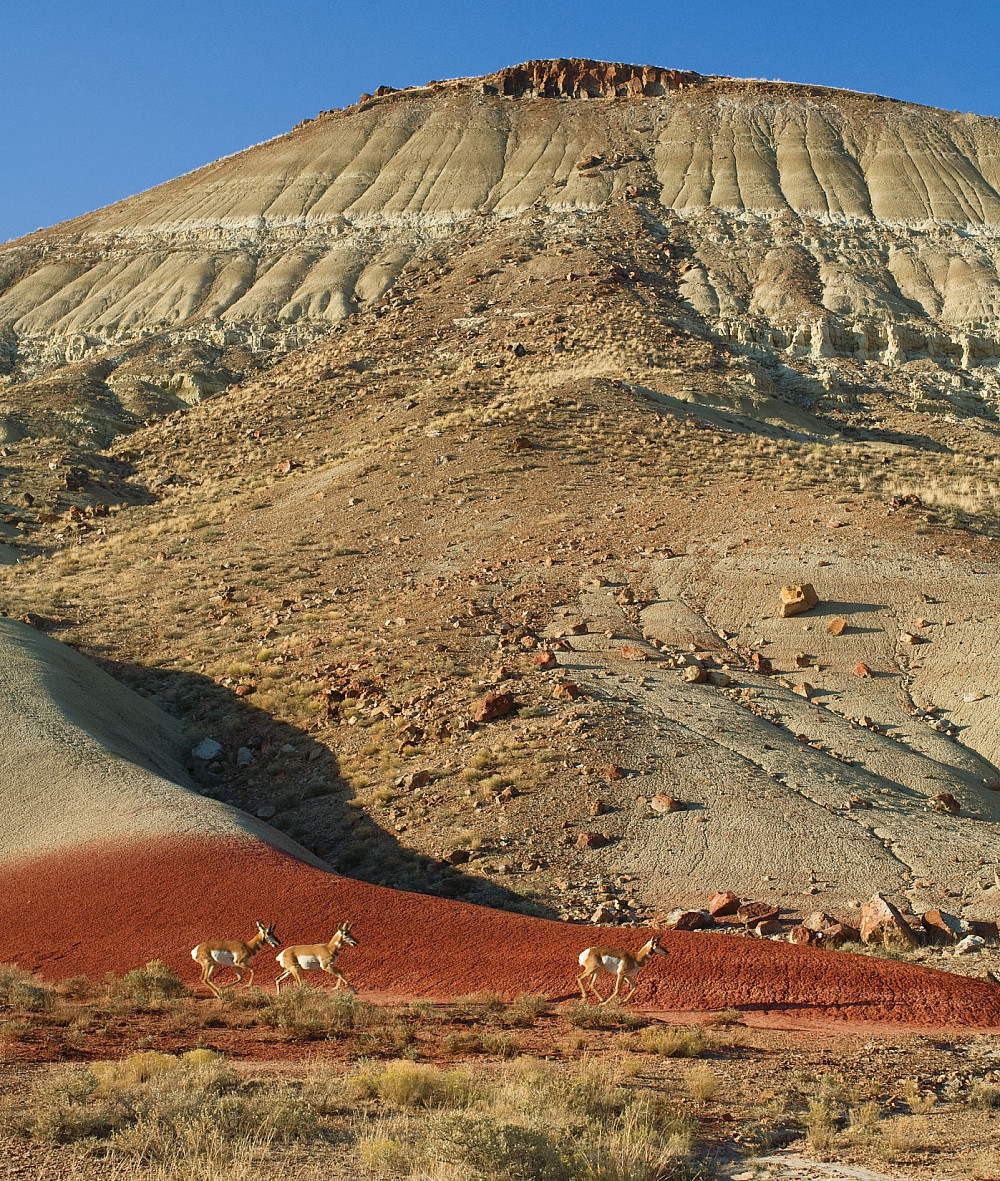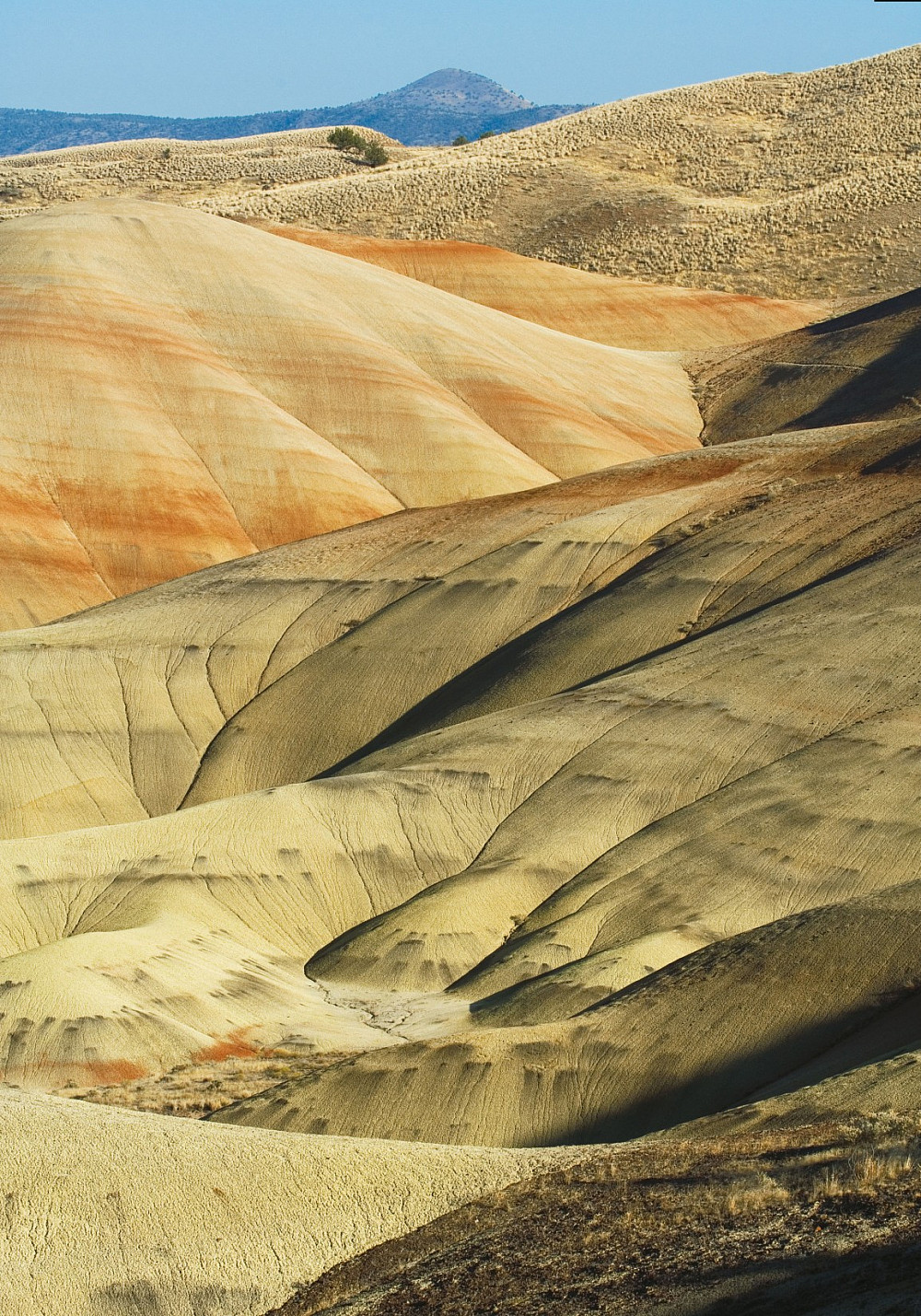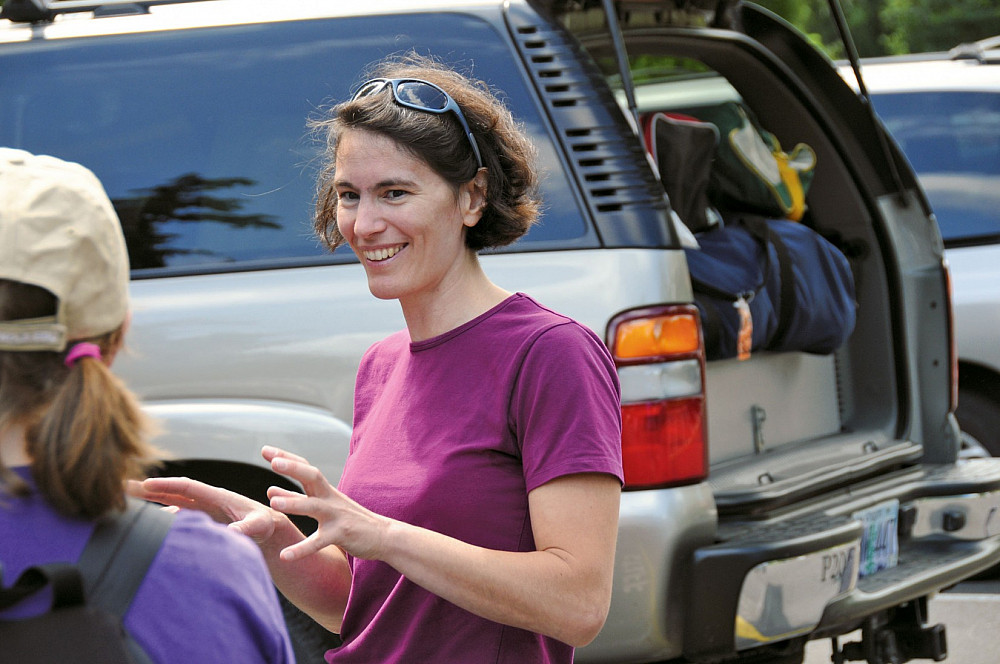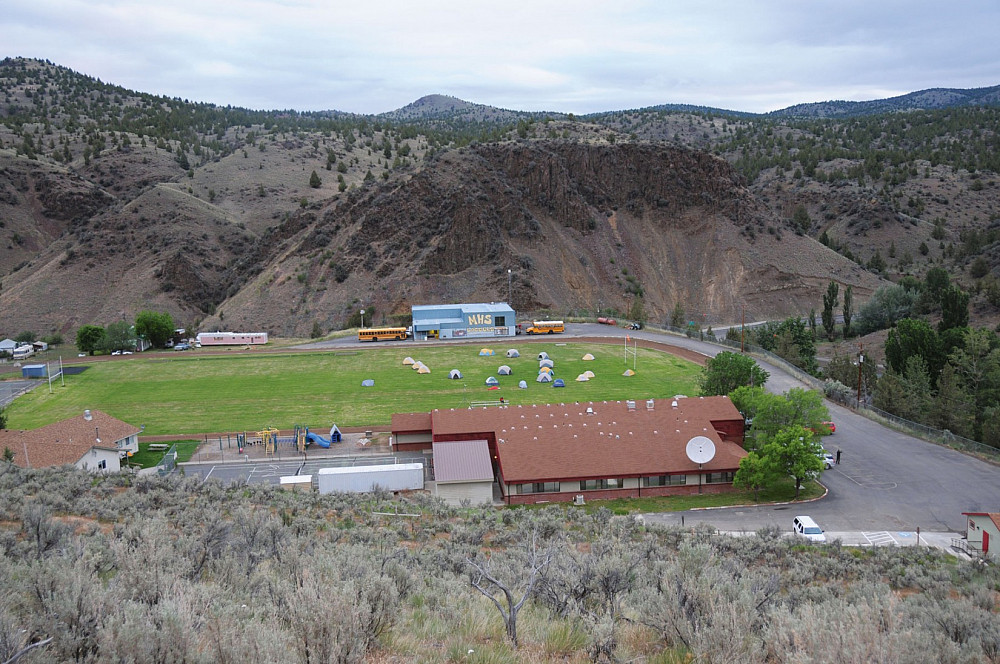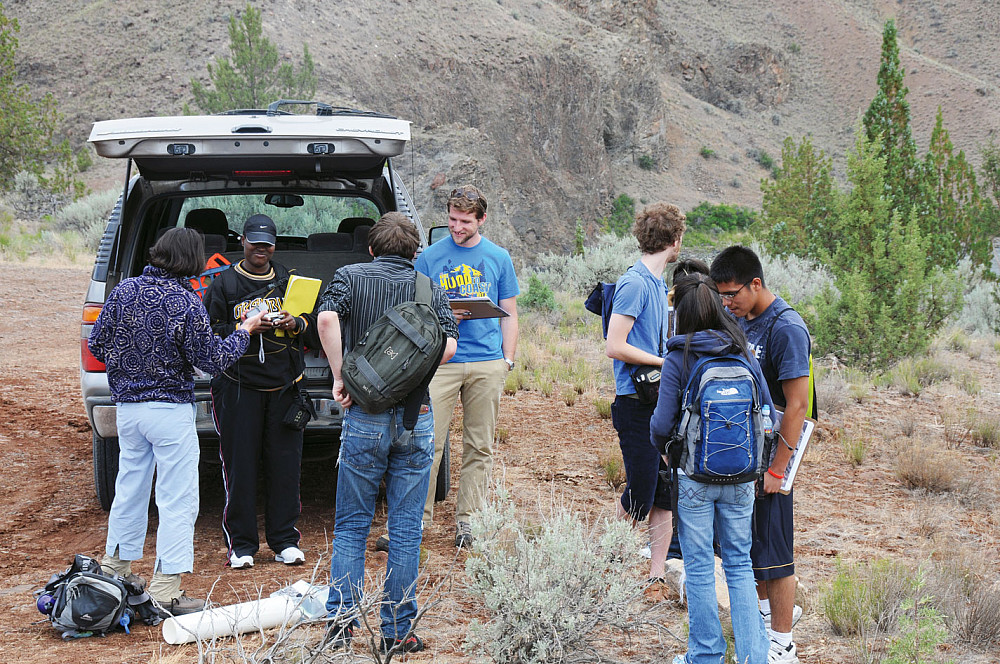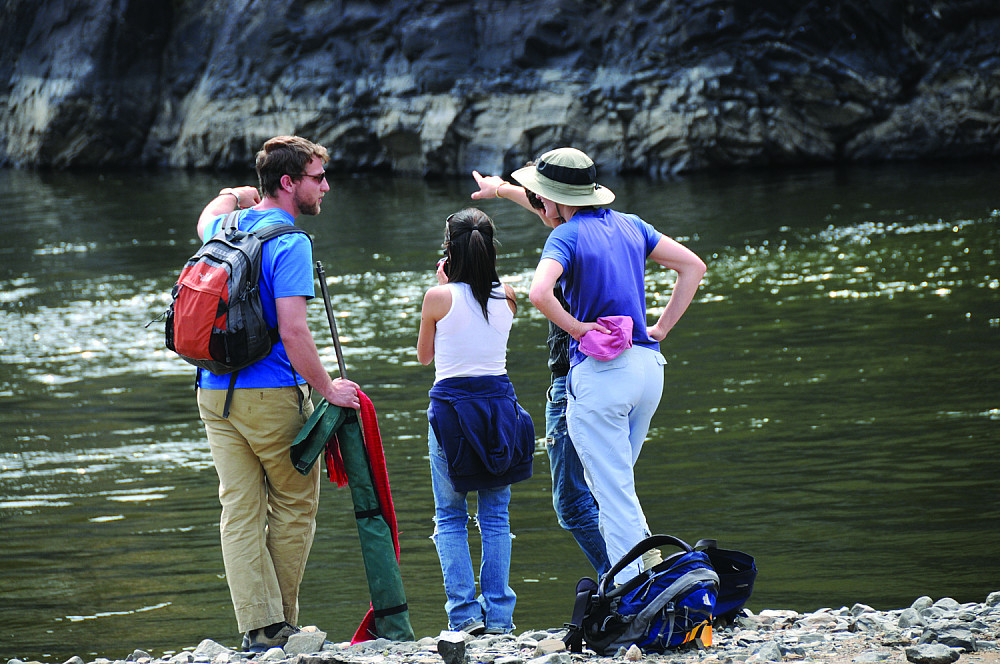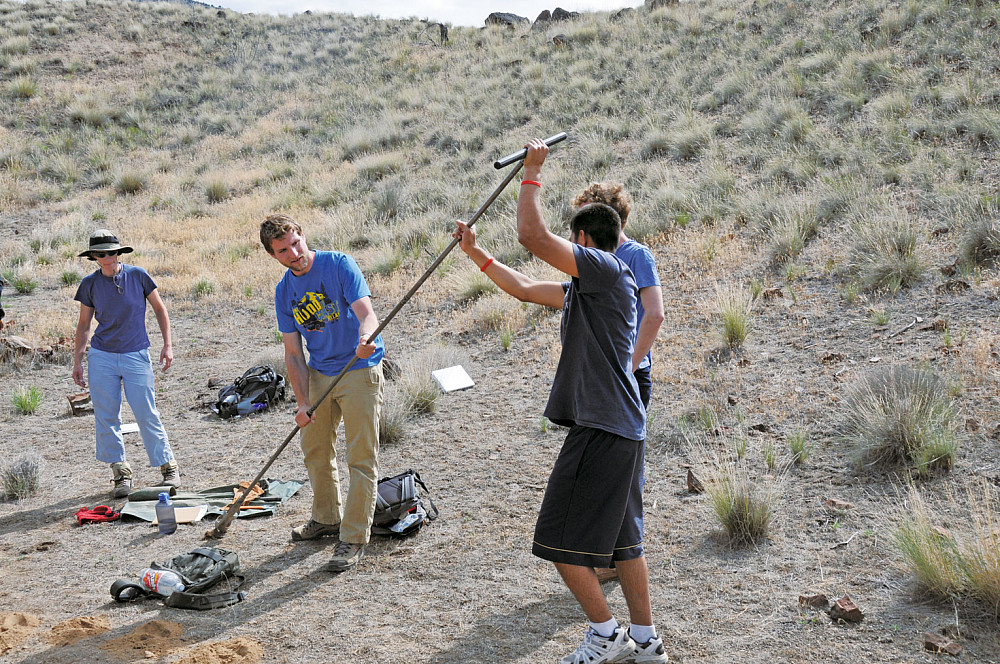main content Science in the Painted Hills, Oregon 2009
Faculty members, undergraduates, and high school students work together to unearth the basics of teamwork and field research.
-
 Pronghorn antelope, second only to the cheetah in speed, sprint across the Painted Hills of central Oregon. This area, known for its rich geological history, became an extension of the Lewis & Clark campus last summer.
Pronghorn antelope, second only to the cheetah in speed, sprint across the Painted Hills of central Oregon. This area, known for its rich geological history, became an extension of the Lewis & Clark campus last summer. -
 The Painted Hills, located in central Oregon, are part of the 14,000-acre John Day Fossil Beds National Monument.
The Painted Hills, located in central Oregon, are part of the 14,000-acre John Day Fossil Beds National Monument. -
 Liz Safran, associate professor of geological science and leader of one of the field research teams.
Liz Safran, associate professor of geological science and leader of one of the field research teams. -
 High school students Jessica Willis, Catrice Allyene, and Sarah Ramos head toward a classroom at Mitchell High School, where they will prepare presentations about their field projects.
High school students Jessica Willis, Catrice Allyene, and Sarah Ramos head toward a classroom at Mitchell High School, where they will prepare presentations about their field projects. -
 Participants camped out on Mitchell High School’s sports field.Bradley Marks
Participants camped out on Mitchell High School’s sports field.Bradley Marks -
 One of the field research teams prepares to hike into the body of a giant landslide that blocked the John Day River thousands of years ago.
One of the field research teams prepares to hike into the body of a giant landslide that blocked the John Day River thousands of years ago. -
 Associate Professor Elizabeth Safran and members of her field research team look toward a terrace mantled with boulders. The rocks were most likely deposited when an ancient landslide blockage was breached, resulting in a large outburst flood on the John Day River.
Associate Professor Elizabeth Safran and members of her field research team look toward a terrace mantled with boulders. The rocks were most likely deposited when an ancient landslide blockage was breached, resulting in a large outburst flood on the John Day River. -
 A U.S. Geological Survey topographic map that includes the landslide area
A U.S. Geological Survey topographic map that includes the landslide area -
 Associate Professor Liz Safran, Martin Meyer BA ’09, high school student Aaron Romero, and Travis Walton CAS ’10 use an auger to obtain a sediment sample at an ancient landslide site. Finding volcanic ash would help date the age of the slide.
Associate Professor Liz Safran, Martin Meyer BA ’09, high school student Aaron Romero, and Travis Walton CAS ’10 use an auger to obtain a sediment sample at an ancient landslide site. Finding volcanic ash would help date the age of the slide.
L&C Magazine is located in McAfee on the Undergraduate Campus.
MSC: 19
email magazine@lclark.edu
voice 503-768-7970
fax 503-768-7969
The L&C Magazine staff welcomes letters and emails from readers about topics covered in the magazine. Correspondence must include your name and location and may be edited.
L&C Magazine
Lewis & Clark
615 S. Palatine Hill Road
Portland OR 97219
